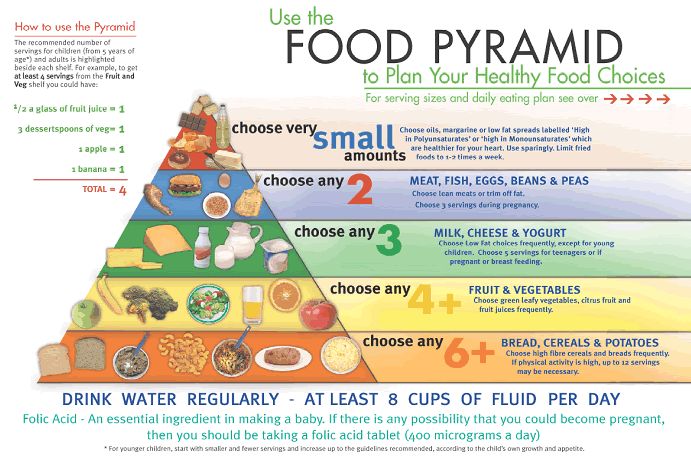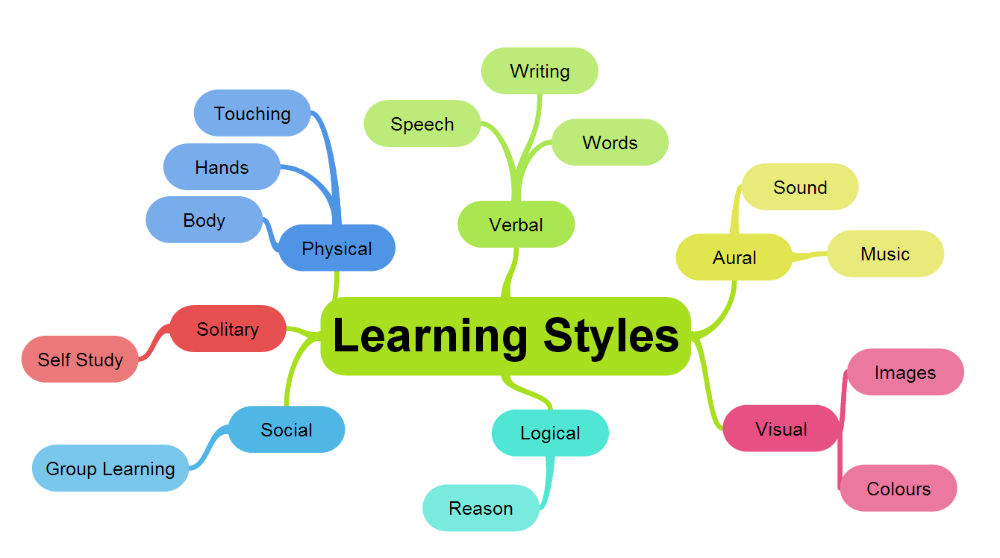Morning sickness in second pregnancy
How does a second pregnancy differ from the first?
Discovering you are pregnant again can be very exciting and you may wonder how different pregnancy will be the second time around. You’ll have more of an understanding of what to expect, although each pregnancy can be different.
Depending on their age, your first-born is likely to need round the clock attention and you might be worrying how pregnancy and a newborn will be fit into your already busy routine.
‘I have noticed a huge difference being pregnant second time around. With my first I downloaded a pregnancy app and kept it up-to-date daily, took regular bump pictures and baby-oiled my tummy from day one. Roll on the second time around and I just don't have the time (or energy) after running around my first born. However, because of this I do much take time out in the evenings like I did the first time around and sit and hold, stroke my tummy and talk to the baby.’
Livia
‘It’s a different ball game.
With work and toddler there’s literally no time to indulge the pregnancy, and no time for my partner to indulge me either! Instead of making me tea, the new version of taking care of me is for him to take the toddler out on Saturday morning so I can make my own tea. And drink it in peace. (Decaf of course). In the past that would have meant nothing but now it’s actual bliss.’
Deirdre
Different symptoms in a second pregnancy
Second pregnancies can feel different from the first. You may find you have different symptoms after becoming pregnant with a second child. Women have told us that they have noticed the following differences:
The bump gets bigger sooner, probably because your stomach muscles have already been stretched out once before.
You may feel that you can feel the baby ‘kick’ or ‘move’ sooner. This could be just because you know what they feel like, so this time you’ll recognise a movement you might have dismissed in the first pregnancy.
You may have morning sickness for the second even if you didn’t have it for the first. If you had morning sickness for the first one you are more likely to have it again for the second.
You may have more Braxton Hicks.
You are likely to feel more tired. Looking back, your first pregnancy may seem like an era of relaxation compared to the exhaustion of minding a toddler while pregnant.
Labour and birth take less time. For first-time mums, the first stage of labour (cervix dilating), lasts an average of eight hours but for women who've had a baby before, the average labour is five hours. The second stage (pushing and birth) is likely to last under two hours, compared with three hours for first-time mums.
‘My second baby was a water birth, compared to an assisted birth with No 1. It didn’t take long at all and felt easier.’
Mari
You may feel that you know everything about pregnancy but don’t miss your antenatal appointments. Even if your first pregnancy was uncomplicated, attending every appointment is just as important in this one because your midwife needs to check on the wellbeing of your growing baby.
Even if your first pregnancy was uncomplicated, attending every appointment is just as important in this one because your midwife needs to check on the wellbeing of your growing baby.
Other children are welcome at appointments, which can help them feel involved. It’s a good idea to bring snacks and toys/books to keep them occupied in waiting rooms. If you’re having an ultrasound scan, you could bring someone else with you to look after your child in the waiting room for the first few minutes, just so you can be confident that everything is OK before they come and join you.
Your mental wellbeing in a second pregnancy
Mentally, you are likely to be in a different place than you were with your first pregnancy. You’re unlikely to have the same amount of time to enjoy your pregnancy that you had with your first now that you have a child to look after. These are some tips for coping with pregnancy when you have a child to look after:
Rally friends and family to help out. Are there people you can trust to look after your child while you have some time to yourself?
Are there people you can trust to look after your child while you have some time to yourself?
If you are at home but have a partner who works regular 9-5 hours, hand your child over when they come back in the evening and take an hour for yourself. Leave the house if possible so you won’t be tempted to spend your hour tidying or dealing with household tasks. Go to a café with a book or tablet, visit a friend, walk in the park, go to the hairdresser or go for a swim.
If you work, take a day/half day or a few hours off every couple of weeks but leave your child in childcare or with friends. If your partner works, you could do it together.
You might find it harder to pay attention to the do’s and don’ts of pregnancy. Make it easier by setting an alarm to take your folic acid and vitamin D. Think of a place to keep them that is out of reach of children but also in your line of sight every day. For example, you could put them near the kettle if you always have a hot drink in the morning.
Online shopping might help. Most websites save your preferences so you can re-order items from a ‘usuals’ or ‘preferences’ list, saving time and mental energy.
Build exercise into your day if you can. Whether it is cycling to work or walking to the park with your child, building it in as a regular part of your day will make it one less thing to think about. Exercise is good for you and your unborn child.
Go to bed early. It’s easy to be tempted to stare at screens into the night, but there is research that it makes sleep harder. A good night sleep will make a difference to your energy levels and mental wellbeing.
'I gave up going to the supermarket completely when I had my first baby. I got a weekly shop delivered, and extra bits and pieces locally when I needed them.'
Mari
Planning for early days with a newborn and an older child
Managing in the early days with a newborn and an older child can be challenging, particularly if the older child is under three years old.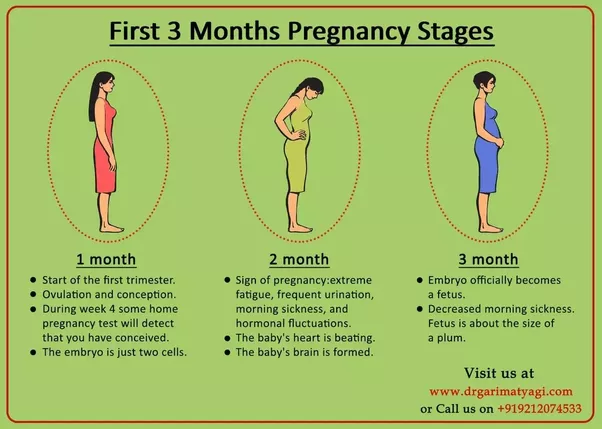 There are some things you can do now to prepare:
There are some things you can do now to prepare:
Ask friends and family who are nearby to make meals for the days after the birth. If you would prefer not to ask them yourself, get a close friend to handle it for you.
If your child needs you to be near to go to sleep, work with your partner on withdrawing from this process. If your partner can put them to bed you will be free to focus on the newborn or sleep when the time comes.
If your child is in childcare, think about leaving them there part time at least for a few weeks after the birth, if you can afford it. It gives them continuity at a time of change and gives you space to concentrate on your newborn.
If you have family or friends who can take your first-born out for a few hours in the first few weeks after the birth, line them up to do so.
There are some useful books about a new baby coming to live with the family that you can read with any other children you have. These can be useful to look at and read together in the run up to having your baby.
‘Me and the toddler talk a lot about the baby and he’s helped to sort out baby clothes. I definitely think early preparation is key. I've already asked my mother in law to have my son one day a week so I can use this day to bond and establish our feeding routine.’
Livia
Breastfeeding a second time
Even if you did not breastfeed your first baby, one study shows that milk comes in easier for your second baby than your first, so you may feel it’s worth trying. Talk to your midwife about what you would like to do, so you can prepare as much as you can before the baby arrives.
11 Ways It’s Different From Your First
Your little one is going to have a sibling! As your family expands, you might want to expand your expectations this go-round. Don’t expect your second pregnancy to mirror your first.
Even though your babies come from the same womb, it doesn’t mean your pregnancies will be the same. Mustela’s baby experts give you the low-down when it comes to your second pregnancy with these 11 surprising ways it’s different from your first.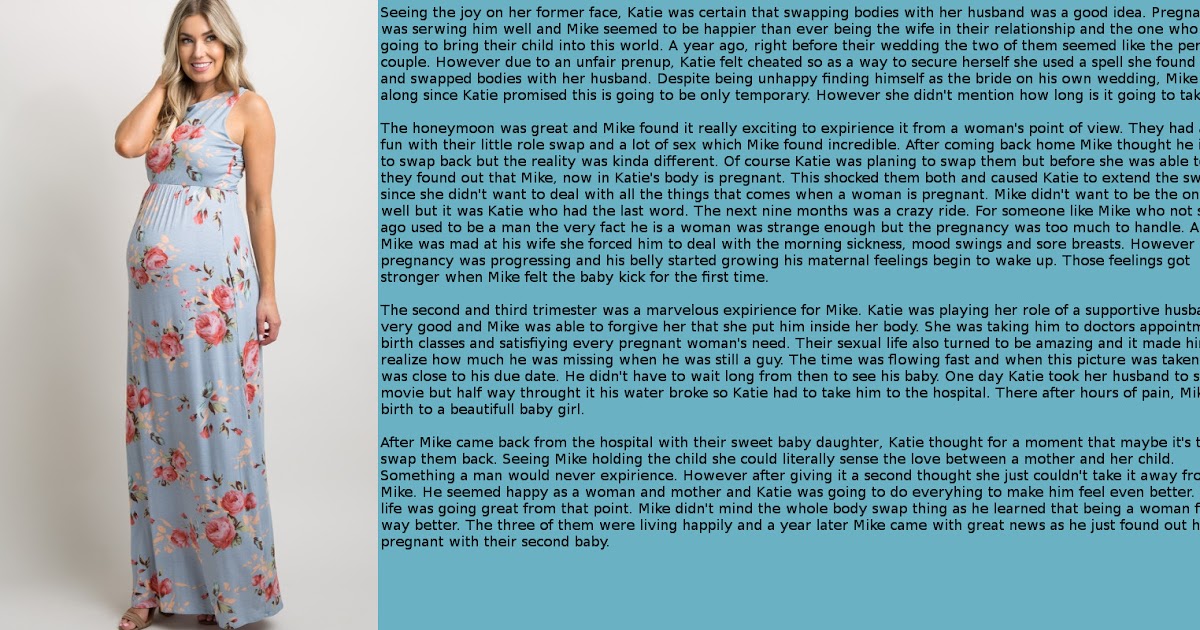
After that, we’ll offer a few tips for preparing to welcome baby number two!
Second Pregnancy Differences
1) You’ll Feel Pregnant Sooner
With your first pregnancy, you probably wondered when you would actually “feel” pregnant. But since you’re a pro by now, you’re more apt to recognize some early pregnancy symptoms!
Keep in mind that the symptoms might be different from your first pregnancy, but they could also be identical. Some symptoms that you may experience more or less of include:
- Morning sickness
- Indigestion
- Tummy troubles, like constipation
- Emptying your bladder frequently
- Food cravings
- Breast enlargement and sensitivity (Although moms-to-be have found this to happen less the second time around.)
For example, you may have had morning sickness with your first pregnancy. You could have the same, more, or less morning sickness with your second pregnancy.
While we’re on the topic of morning sickness, you’ve probably heard the old wives’ tale that relates morning sickness to the gender of your baby. But this pregnancy symptom has less to do with the gender of your baby and more to do with your body.
But this pregnancy symptom has less to do with the gender of your baby and more to do with your body.
Even if you are expecting the same gender as your first child, you could experience different symptoms this time around.
Check out our article Pregnancy Symptoms: 14 Signs That You Might Be Pregnant for a deeper and more thorough explanation of your pregnancy symptoms.
2) You’ll Look Pregnant Sooner
Because your abdominal and uterine muscles have already stretched and are laxer from your first pregnancy, your belly will pop out sooner than it did with your first baby.
Unfortunately, those lax abdominal muscles come with their own set of possible challenges: backaches and other body pains. The good news is you’ll be able to break out your old maternity clothes sooner!
3) You May Be More Tired
You were most likely able to take naps and rest whenever you needed to with your first pregnancy. We can’t say the same for your second pregnancy.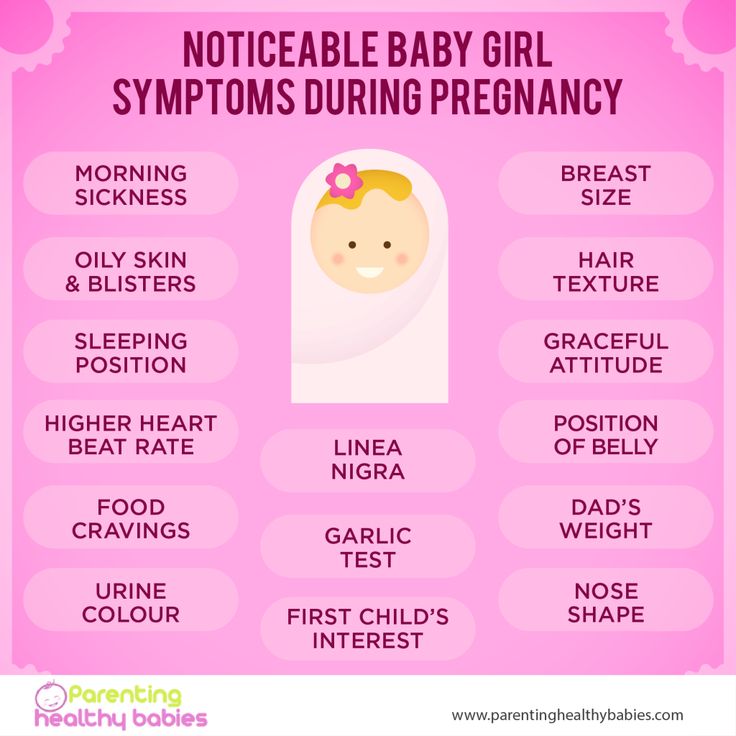
After all, you’re probably chasing around another child! Who has energy when you’re housing a baby and meeting the demands of your firstborn?
Be prepared for the fatigue to set in a little sooner with this pregnancy. And when it does, call in reinforcements so you can catch that much-needed nap!
It’s also important to maintain a healthy diet and a consistent exercise routine while you’re pregnant to regain your lost energy.
4) You May Carry Your Baby Lower
Your abdominal muscles likely aren’t as strong and tight as they were during your first pregnancy, so they can’t support your baby as well as they did the first time around.
Because of this, you may carry your baby a little lower now. The bad news? That means more trips to the restroom to empty your bladder, along with some pelvic discomfort because of your baby’s position.
And since you may carry your baby lower than before, stretch marks might appear — or reappear — during your second pregnancy. Try Mustela’s Stretch Marks Cream or Stretch Marks Serum to limit the appearance of stretch marks and leave your skin restored, refreshed, and noticeably smoother!
Try Mustela’s Stretch Marks Cream or Stretch Marks Serum to limit the appearance of stretch marks and leave your skin restored, refreshed, and noticeably smoother!
Our Stretch Marks Cream is a nourishing cream specifically formulated to deliver hydration, which helps prevent the appearance of stretch marks during pregnancy.
In addition to moisturizing your skin naturally, this quick-absorbing cream soothes feelings of tightness and discomfort and leaves your skin smooth.
Plus, you can rest easy about putting this product on your skin since it’s made with 96% naturally-derived ingredients and is safe to use during pregnancy and postpartum. It’s free of questionable ingredients like parabens, phenoxyethanol, and phthalates.
And it includes natural ingredients like Avocado Peptides to help protect and strengthen delicate skin and Maracuja Polyphenols and Hamamelis Plant Extract to improve skin’s suppleness and elasticity.
If you prefer a serum instead of a cream, our specially formulated Stretch Marks Serum leaves your skin moisturized, smooth, and supple and creates a moisturizing barrier on your skin for added protection.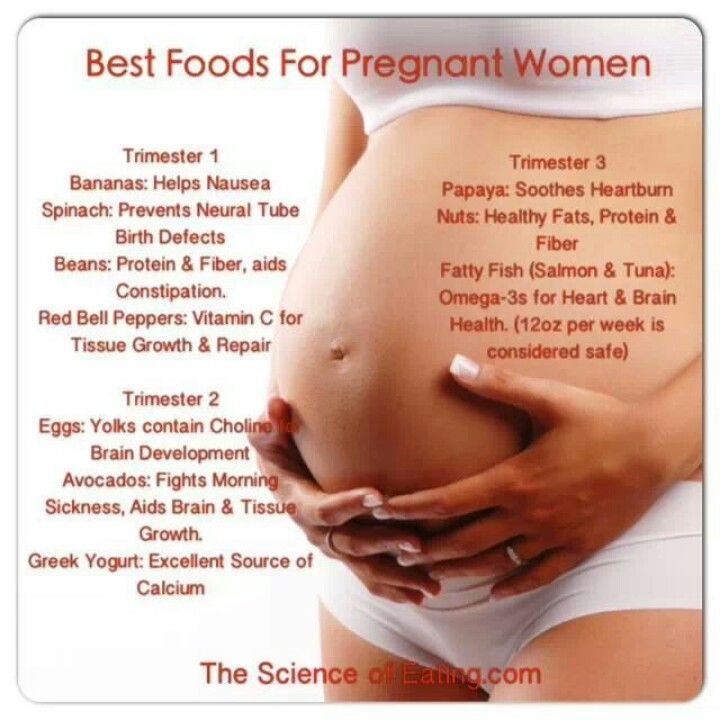
It’s a concentrated hydrating serum designed to help minimize the appearance of recently formed stretch marks while also giving your skin a plump look and feel.
With a pipette for easy, targeted application, simply apply this fragrance-free product to stretch mark areas both morning and evening for at least eight weeks.
What sorts of wonderful natural ingredients does this serum offer your skin? Avocado oil, maracuja oil, hyaluronic acid, and plant-based glycerin.
5) You’ll Feel Your Baby Move Sooner
Once again, you can thank your stretched abdominal muscles for this one! You may start to feel your baby moving around at about 16 weeks — or even sooner.
Plus, you’ve felt your baby move before, so you’re more aware of what it feels like when your baby kicks!
6) You’re Not As Anxious
Your first pregnancy left you with curiosity and worry. Since it was your first time being pregnant, you had no idea what to expect with each trimester.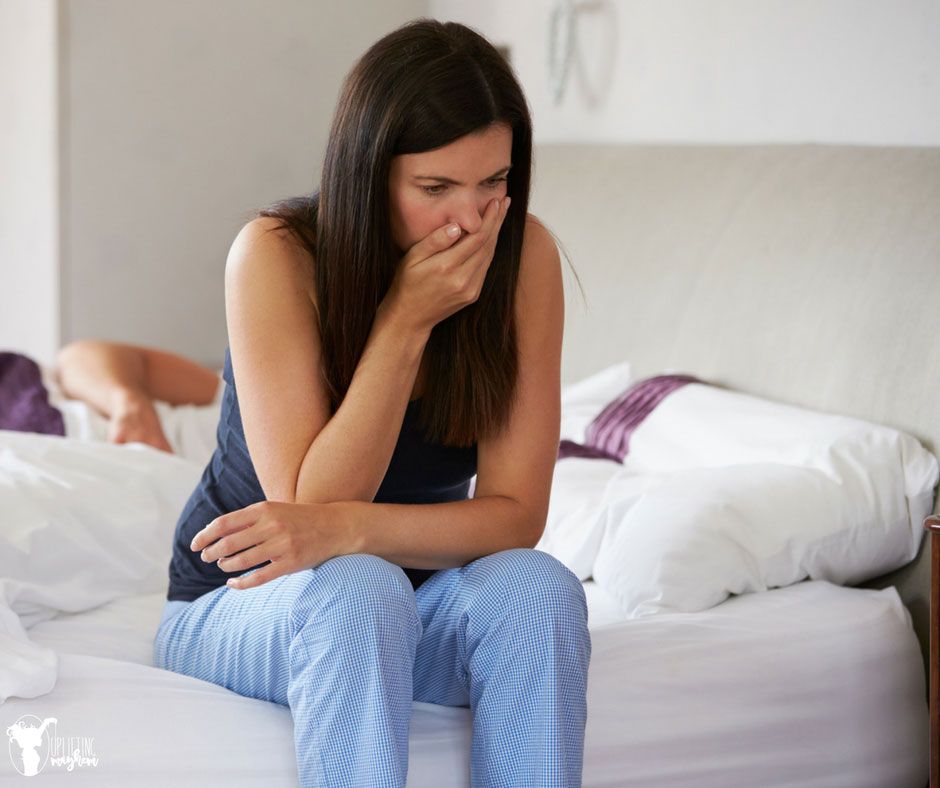
Your second time around, you pretty much know what to expect from the first, second, and third trimester, even though your pregnancy is different. You can put your mind at ease now that you’ve already been pregnant and given birth.
However, no pregnancy is exempt from a worrisome mom. If you find yourself worrying so much that you can’t sleep or it’s taking over your mind, talk to your obstetrician right away!
Don’t forget that the final trimester is the fourth, and this is another aspect that will be different with each pregnancy and each baby. Read our article on what the fourth trimester is and how you can prepare for it.
7) You’ll Need To Share The News With A Child
Whether you have a baby, toddler, older child, or adolescent, you have an extra someone to share your exciting news with!
Age-appropriate preparation will make all the difference for your first child. After all, they are going from only child to oldest child. Include your child in your big reveal and make it special for them.
Let them share in the excitement and celebrate this new journey that you and your family are on!
If your firstborn is now a toddler, it might be a challenge to find a way to explain things to them and help them to prepare for the baby to come. For specific tips on how to speak with your toddler about their new sibling, click here.
8) You Will Have New Emotions
With any pregnancy, moms across the board experience a variety of emotions. Some moms are filled with excitement, while some are filled with worry. You could even experience both at the same time!
With the highs and lows of emotions that accompany moms-to-be, you’ll now have the added worry of how a new baby will affect your firstborn.
You have a special bond with your first child and wonder if it will be the same the second time around. You love them so much and fear that you won’t be able to love your second child the same.
Many mothers experience this feeling during their second pregnancy.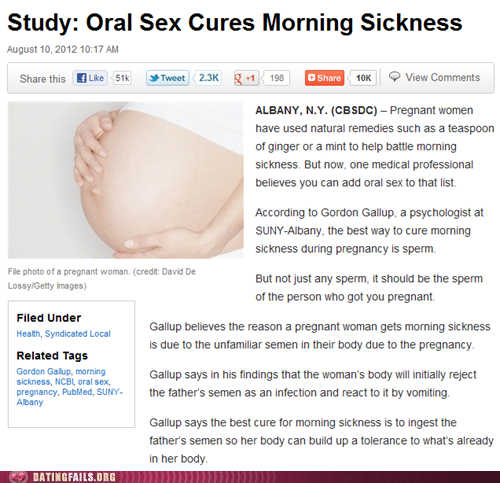 Put your mind at ease knowing your family isn’t the only thing expanding — your love and your heart are, too!
Put your mind at ease knowing your family isn’t the only thing expanding — your love and your heart are, too!
9) You Might Experience More Braxton Hicks Contractions
Because your body has felt — and experienced — real contractions, it can recognize Braxton Hicks contractions easier.
On top of that, your uterine muscles are already stretched out (as we’ve mentioned), so those Braxton Hicks contractions may be more frequent for a second-time mom.
To tell the difference between Braxton Hicks contractions and real contractions, try changing your position. If you’ve been sitting, stand up for a bit or vice versa. Drinking lots of water, (around two liters) is something else you can try to stop Braxton Hicks contractions.
Braxton Hicks contractions will end after a little while, whereas real, active contractions will continue throughout these changes.
10) Your Labor And Delivery Will Likely Go Faster
Your body’s prior experience with labor and delivery play a role in a faster delivery. Every phase of labor tends to be shorter for second-time moms.
Every phase of labor tends to be shorter for second-time moms.
Even the amount of time you’ll spend pushing is shortened! This is because certain parts of your body have loosened up, specifically your cervix and uterus.
11) Your Breastfeeding Experience May Be Easier
If you breastfed your first baby, you and your newborn were learning the ropes when it came to breastfeeding. It was a new experience for both of you.
This time around, however, you’re familiar with how it works. Even though breastfeeding is new for your baby, you have a better idea of what to do!
That said, just as with other aspects of raising children, it’s different with each little one! If you find yourself with sore or cracked nipples or your newborn can’t seem to latch on correctly, don’t hesitate to reach out to a lactation consultant.
Tip: If you choose to breastfeed this time, don’t forget to try our Nursing Comfort Balm to keep your skin comfortable while nursing. This must-have product protects your nipples, eases discomfort, and helps to replenish and restore your skin during and after breastfeeding!
Made with 100% naturally derived and food-grade ingredients, this soothing and restorative nipple cream envelops your skin in a moisturizing barrier.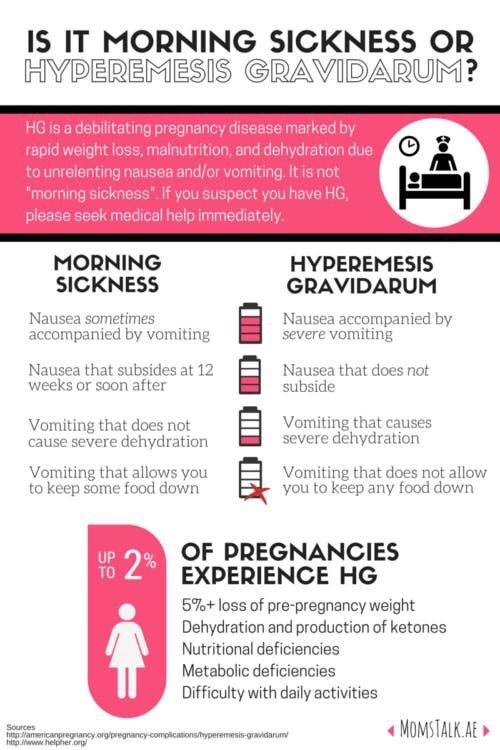 It’s enriched with vitamin E and olive oil to nourish your skin. And it’s free of lanolin, fragrance, and dye.
It’s enriched with vitamin E and olive oil to nourish your skin. And it’s free of lanolin, fragrance, and dye.
Rest assured that this product is backed by scientific research, developed in collaboration with healthcare professionals, and tested under dermatological control. We’ve made sure that it’s proven safe for both moms and babies.
Now that you know a bit more about how your second pregnancy might differ from your first, let’s move on to a few tips for how to prepare for your second little one.
How To Prepare During Your Second Pregnancy
Don’t Hesitate To Have A Baby Shower
While a baby shower is a perfect opportunity for your friends and family to shower you with baby necessities, the event is, first and foremost, a celebration of your new baby’s life! For this reason, don’t hesitate to have a baby shower for your second baby (and your third and fourth!).
If you want to switch things up, the event could look less like a baby shower and more like a girls’ brunch, a couples’ barbecue, or a gifts-for-mom shower. You could also opt for a baby sprinkle, which is similar to a baby shower but less involved.
You could also opt for a baby sprinkle, which is similar to a baby shower but less involved.
As far as gifts go, you probably already have many of the baby basics like a crib, rocking chair, and the like. But you’ll still need plenty of baby supplies, like wipes, shampoo, lotion, and more. These are the types of items you’ll want to put on your registry.
Stock up by registering for bundled diaper wipes, like our Diaper Wipes Bundle, or a 3-pack of our Certified Organic Water Wipes with Cotton and Aloe Bundle.
These EWG Verified, organic wipes are designed to gently cleanse your baby’s skin, leaving it soothed, soft, fresh, and moisturized.
In addition to being certified organic, the wipes are composed of 99.8% ingredients of natural origin, including organic cotton that’s recycled from the textile industry and organic aloe vera grown on fair-trade farms in the highlands of Mexico.
We’ve made our organic wipes safe for little ones (even newborns) and good for the planet, too.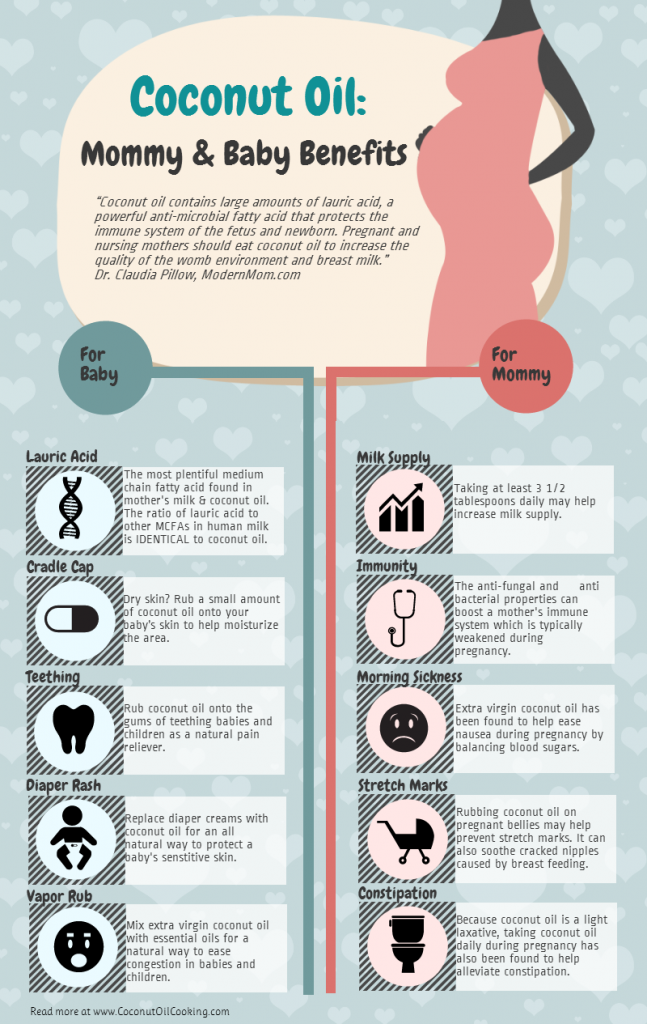 The packaging contains up to 10% recycled plastic from industrial scrap and is made without a plastic lid, reducing our plastic use by 47%. Plus, the wipes themselves are biodegradable.
The packaging contains up to 10% recycled plastic from industrial scrap and is made without a plastic lid, reducing our plastic use by 47%. Plus, the wipes themselves are biodegradable.
Take Care Of Yourself
Even though this pregnancy thing isn’t brand new to you, it’s still essential to take good care of yourself. Get enough sleep, eat well, stay active, and keep up with your prenatal vitamins and doctor’s appointments.
As we mentioned, care for your skin with Nursing Comfort Balm, Stretch Marks Cream, and, for an all-over moisturizer, use our Certified Organic Hydrating Cream with Olive Oil and Aloe.
This fragrance-free lotion is a lightweight, restorative cream for the face and body, leaving your skin soft, supple, and hydrated. It’s safe for baby skin and effective enough for adult skin, too, making it ideal to keep on hand for the whole family!
Our Organic Hydrating Cream is carefully crafted with 99.6% naturally-derived ingredients, including organic aloe vera, organic sunflower oil, and organic olive oil that’s sourced from family-owned olive groves in the South of France.
Recruit Friends And Family
One way to take care of yourself is to know your limits and ask for help. Your second pregnancy is the perfect time to recruit your family and friends to lend a hand.
While your first pregnancy might have been overwhelming since it was your first rodeo, you might need more help this time around since you’ve got your hands full in addition to a growing belly!
Ask for help from family and friends both now, during your pregnancy, as well as after your baby is born, and you’re juggling two kids.
Make the needed pet and child care arrangements for when you go into labor and stock up on freezer meals if you can!
Invest In Your Partner
With a toddler or young child in your home, it might be harder to get away for a special weekend or go out for date nights. But do what you can to invest in your partner and your relationship before the arrival of your second baby.
It doesn’t have to be a weekend or a night out if you can’t swing it.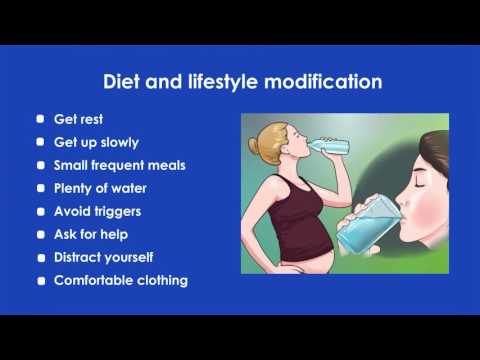 Special time together at home and intentional conversations will also strengthen your relationship.
Special time together at home and intentional conversations will also strengthen your relationship.
Set Up The Nursery
Depending on the layout of your house and what the sleeping arrangements will be, setting up your new baby’s nursery might mean moving your first child out of the nursery and into their big-kid bed.
Think ahead about any needed changes so you can take the necessary time to help your first child adjust as well as possible and have the nursery prepared for your new little one.
Install A Second Car Seat
If your first child is still little, they’ll still be in a car seat or booster seat. With the second one on the way, it’s time to make room in the car for two!
Just as with your first baby, make sure the car seat is installed in the car, ready and waiting for delivery day.
Prepare Financially
It’s a good idea to take a look at your finances before baby number two comes along. Find out what your current insurance plan covers, talk to your boss about maternity or paternity leave, and factor in any current or upcoming childcare costs for both of your kids.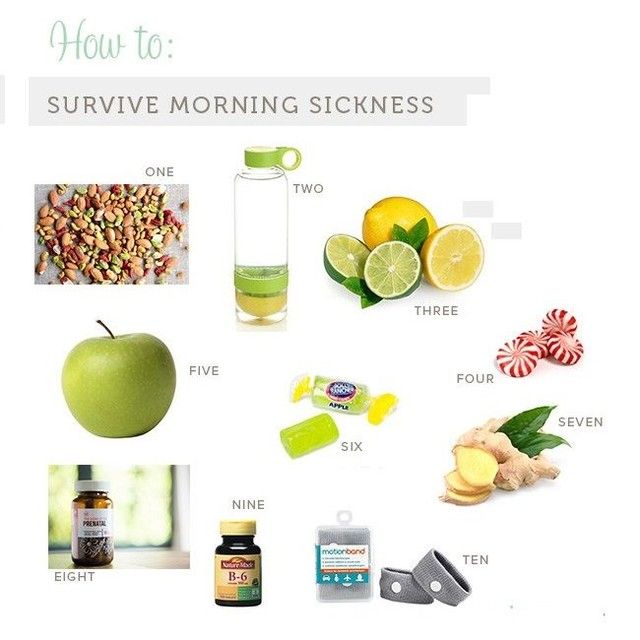
Get Ready For Delivery
Since this is your second pregnancy, you’ll have a better idea of how childbirth will go. And, as we mentioned, it will probably go a bit more quickly than your first delivery.
Even though you know the ropes, you’ll still need to pack your hospital bag in advance so it’s ready to go at a moment’s notice.
You can also create a birth plan if you want, just remember that you’ll need to be flexible when the day comes.
Embrace Your Second Pregnancy
You’re no stranger to pregnancy symptoms. But keep in mind that your symptoms during this pregnancy may or may not resemble the symptoms of your first pregnancy.
With your second pregnancy, you have a little one — or not-so-little-one — running around at home. And whether you’re toting your child on your hip or to baseball practice, you’ll find naps won’t come as easy as they did during your first pregnancy.
Another difference in your second pregnancy is a shorter labor and easier delivery in terms of how your body adjusts.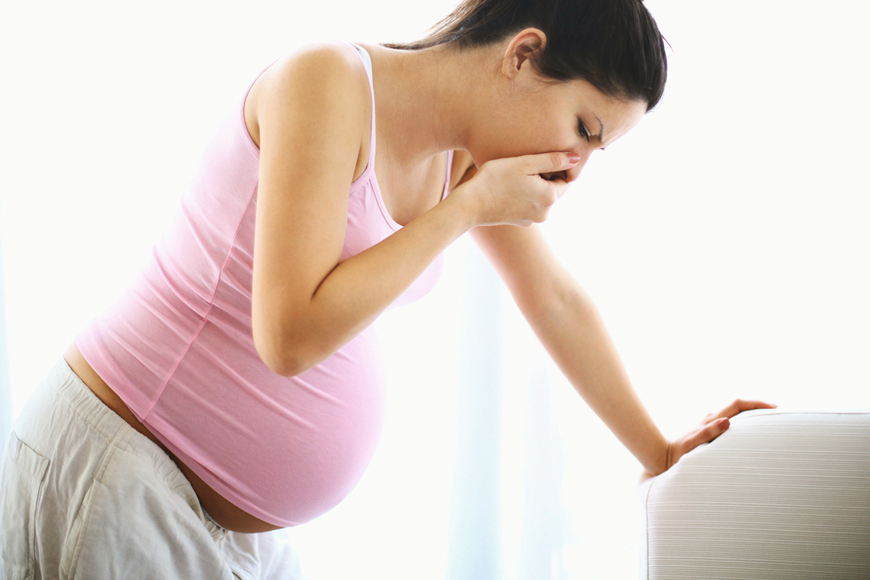 We’d say this is a perk of your second pregnancy, with the most obvious perk being your new little one!
We’d say this is a perk of your second pregnancy, with the most obvious perk being your new little one!
Mustela is excited for your growing family, which is why we not only have products for you, the mom-to-be, but we also have products for your little one.
For example, check out our Bath Time Essentials Set. It takes care of your baby’s skin care needs during and in-between bath time!
And for you, the mom-to-be, find your favorite maternity products from Mustela. Our Stretch Marks products are a great starting point! These powerhouse products safely support and care for your changing skin!
Now you’re ready to embrace your second pregnancy!
Early toxemia of pregnancy - causes and treatment
- When does early toxemia begin during pregnancy
- Manifestation of early toxicosis
- Causes of early toxicosis
- Severity of toxicosis during pregnancy
- How to manage morning sickness and relieve symptoms
- Principles of treatment of early toxicosis
Most women, having barely learned about the onset of pregnancy, expect to feel unwell, bouts of nausea and even vomiting.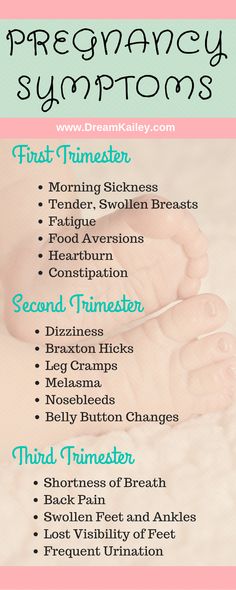 Indeed, early toxicosis often becomes a constant companion of many expectant mothers in the early stages of pregnancy. Is there any way to alleviate these unpleasant symptoms?
Indeed, early toxicosis often becomes a constant companion of many expectant mothers in the early stages of pregnancy. Is there any way to alleviate these unpleasant symptoms?
Toxicosis (and doctors call this condition gestosis) is a syndrome that is defined as a violation of a woman's adaptation to pregnancy. According to the time of occurrence, early preeclampsia is distinguished, which will be discussed in this article, and late preeclampsia, which appears in the last 2-3 months of pregnancy and is manifested by edema, increased blood pressure and the appearance of protein in the urine.
When early morning sickness begins in pregnancy
Early morning sickness usually occurs in the first half of pregnancy. As a rule, after the end of the formation of the placenta, that is, at 12-13 weeks of pregnancy, the phenomena of toxicosis stop. During a normal pregnancy, adaptive changes in the function of almost all organs and systems occur in a woman's body, which are regulated by the nervous system with the participation of endocrine glands. Toxicosis also occurs due to the impossibility of the adaptive mechanisms of the body of the expectant mother to adequately meet the needs of the developing fetus.
Toxicosis also occurs due to the impossibility of the adaptive mechanisms of the body of the expectant mother to adequately meet the needs of the developing fetus.
Manifestation of early toxicosis
The most common manifestation of toxicosis is vomiting. Other forms of early toxicosis are very rare:
- pregnancy dermatosis is a group of skin diseases that occur during pregnancy and disappear after it. When it occurs in early pregnancy, dermatosis is caused by immune disorders in the body of a pregnant woman, and is also most often found in patients with diseases of the digestive and endocrine systems. The most common form of dermatoses of pregnancy is pruritus gravidarum, which can be on a small area of the skin or spread throughout the body, including the feet and palms.
- tetany (chorea) of pregnant women. This condition occurs when the function of the parathyroid glands decreases, as a result of which calcium metabolism in the body is disturbed.
 Clinically, the disease is manifested by muscle cramps, more often cramps occur in the fingers, sometimes in the muscles of the face.
Clinically, the disease is manifested by muscle cramps, more often cramps occur in the fingers, sometimes in the muscles of the face. - salivation - increased secretion of saliva, in connection with which there is a large loss of fluid (up to 1 liter per day). Salivation can be an independent manifestation of toxicosis or accompany vomiting of pregnant women. In the development of salivation, not only changes in the central nervous system are important, but also local disturbances in the salivary glands and their ducts under the influence of hormonal changes.
- Pregnancy bronchial asthma is an extremely rare form of preeclampsia.
- osteomalacia of pregnancy - softening of the bones due to a violation of the metabolism of calcium and phosphorus, while the bones of the pelvis and spine are more often affected
- neuropathy and psychopathy of pregnant women.
Learn more about the services:
- Tests for pregnant women
- Ultrasound of the 1st trimester of pregnancy
Causes of toxicosis in the early stages
There are many theories trying to explain the causes and mechanisms of development of early toxicosis: the most recognized are the so-called neuro-reflex and immunological.
According to the neuro-reflex concept , vomiting occurs as a result of a violation of the relationship between the cerebral cortex and subcortical structures. During pregnancy, the subcortical centers of the brain begin to work more intensively than usual, which are responsible for most protective reflexes, including breathing and cardiac activity. In the same areas of the subcortical structures are the vomiting and salivary centers, the nuclei of the olfactory system of the brain. Excitation processes also capture them. Therefore, nausea and vomiting may be preceded by such phenomena as deepening of breathing, increased heart rate, an increase in the amount of saliva, pallor due to vasospasm, and a change in smell.
Immunological disorders play a certain role in the development of preeclampsia . The timing of the onset of vomiting usually coincides with the formation of blood circulation in the placenta, increased reproduction of white blood cells - lymphocytes, which are involved in immune reactions. The fetus is foreign to the mother's body, and her immune system reacts to it in this way. After the full maturation of the placenta, which accumulates all these immune cells, toxicosis usually disappears.
Human chorionic gonadotropin (hCG) plays a certain role in the development of vomiting during pregnancy. This hormone is produced by the placenta during pregnancy. Its high concentration can provoke vomiting.
The severity of toxicosis during pregnancy
The main symptom of early toxicosis of pregnant women is vomiting. Depending on the frequency of its occurrence, as well as the degree of metabolic disorders in the body of the expectant mother, doctors distinguish three degrees of severity of vomiting during pregnancy.
How to manage morning sickness and relieve symptoms
Treatment for mild morning sickness is usually done at home. But, nevertheless, a pregnant woman should be under the supervision of doctors, take all the tests recommended by the doctor, and follow the appointments. This will allow the doctor to monitor the condition of the future mother's body and prevent possible complications in time. A woman needs to organize a normal sleep and rest regimen, walks in the fresh air, a calm atmosphere in the family are shown.
Proper nutrition
You need to eat in small portions, fractionally, every 2-3 hours. Food should be easily digestible, high-calorie and fortified whenever possible. In connection with a decrease in appetite, they recommend varied and pleasant food for the expectant mother, that is, products are selected taking into account the desires of the pregnant woman, with the exception of spicy dishes and smoked meats. It is important to remember that very hot or very cold food often induces vomiting, so the dishes should be warm. Reception of alkaline mineral waters in small volumes 5-6 times a day is shown.
If nausea and vomiting occur in the morning, immediately after waking up, it is recommended to have breakfast while lying in bed without getting up. For breakfast, you can eat dry crackers, crackers, drink tea or water with lemon, light yogurt is allowed. It is better to put all this next to the bed in advance or ask someone to bring breakfast.
Every woman chooses for herself a remedy that helps to fight nausea. Someone helps a slice of orange, lemon or apple, some expectant mothers carry crackers or mint sweets with them to alleviate the symptoms of toxicosis. Pumpkin juice has a good antiemetic effect. Many pregnant women benefit from ginger tea. It is prepared very simply:
ginger root finely chopped or grated on a coarse grater is poured with boiling water and infused for 15-20 minutes. Tea can be drunk warm or chilled, adding lemon, mint or honey to it.
Fats and proteins of animal origin are recommended to be consumed in the morning, when pancreatic enzymes are more active. Dairy products are best eaten after dinner or before bed.
Do not use food with preservatives, broiler meat, fast food, fast food.
To maintain metabolic processes in the body, it is advisable to drink 2-2.5 liters of fluid per day. With increased vomiting, it is not recommended to consume solid and liquid food at the same time. Liquids should not be drunk 30 minutes before and within 1.5 hours after eating, as this provokes vomiting by stretching the walls of the stomach and affecting the receptors.
Decoctions and infusions
Oat broth
As an enveloping agent, that is, a substance that forms a mucous film and prevents irritation of receptors on the walls of the stomach and intestines, oat broth is recommended. It is prepared as follows: 2-3 tbsp. spoons of oat grains are washed, pour 500-700 ml of water, boil over low heat under a lid for 30 minutes. The broth is drained, the grains are crushed and poured with new water and boiled until fully cooked. The resulting mass is crushed with a blender. You need to use the decoction on an empty stomach and in the evening before going to bed, but not earlier than 2 hours after dinner, and also throughout the day in small portions.
It has a particularly good effect in combination with rosehip infusion.
Rosehip infusion
This infusion is a good source of vitamins and microelements - it contains vitamins C, K, P and PP, potassium, manganese, iron, and contributes to the normalization of the gallbladder function. To prepare it, you need 1 tbsp. pour a spoonful of crushed rose hips with 250 ml of boiling water and insist in a thermos for about 2 hours.
The following infusions and decoctions contribute to reducing nausea and improving the condition of the expectant mother.
Phytonast
Take equally: valerian root, common anise fruits, fireweed leaves, linden flowers, marigold flowers, common blueberry shoots, blood red hawthorn fruits. 1 st. Pour 500 ml of boiling water over a spoonful of the mixture ground in a coffee grinder and insist in a thermos for 2 hours, then strain. Take the infusion as needed, up to 6 times a day in a heated form, 1/3 cup.
Benediktov's collection
To prepare this collection you will need: common yarrow (10 g), peppermint herb (20 g), shepherd's purse herb (20 g), valerian officinalis rhizomes (10 g), calendula officinalis inflorescences (20 g) and inflorescences of chamomile officinalis (20 g). Pour 10 g of the mixture with 400 ml of water, soak in a water bath for 30 minutes, strain. Take 50 ml 6 times a day for 25 days, three courses with 15-day breaks.
Viburnum with honey
Grind 2 tbsp. tablespoons of fresh viburnum berries, pour 250 ml of boiling water over them, heat for 10 minutes in a water bath, strain, add a little honey. Take 1/3 cup of warm infusion before meals 3-4 times a day.
Cranberries with mint, honey and lemon
Squeeze the juice from 250 g of cranberries, cool it, boil the pulp in 1 liter of water, add 1 tbsp. a spoonful of mint leaves and leave for 15 minutes under the lid. Strain, dissolve in a hot broth 2-3 tbsp. tablespoons of honey, let cool to room temperature, add chilled cranberry juice and a slice of lemon. Drink 0.5 cup after meals or when nausea occurs.
Rose hips with apples
Crushed rose hips (about 1 tbsp) pour 250 ml of boiling water, add 0.5 tbsp. tablespoons of dried apples, heat in a water bath for 15-20 minutes. This drink can be consumed throughout the day instead of tea.
Rosehip with garden berries
To make a drink you will need: 1 tbsp. a spoonful of rose hips, 1 tbsp. spoon of raspberries, 1 tbsp. spoon of blackcurrant leaves, 1 tbsp. a spoonful of lingonberry leaves. 2 tbsp. spoons of the mixture pour 500 ml of boiling water, boil for 5 minutes, leave for 1 hour, strain. Take 100 ml of decoction 3 times a day.
Therapeutic exercise
Among non-drug treatments, exercise therapy has a good effect. The complex of exercises includes walking, deep breathing with stretching of the muscles of the trunk and limbs. It is necessary to exclude inclinations, they can increase nausea. The complex includes dynamic exercises for training the muscles of the arms, legs, relaxation exercises. Remedial gymnastics also includes training in breathing techniques. As a result, the body is saturated with oxygen, the excitability of the vomiting center decreases - toxicosis is relieved.
Physiotherapeutic procedures
Physiotherapeutic procedures for the treatment of early toxicosis include electrosleep, acupuncture, laser therapy . Electrosleep is a method that uses low frequency currents to induce sleep. The duration of the procedure is from 60 to 90 minutes, the course of treatment is 6-8 sessions.
Laser therapy
In the complex therapy of early toxicosis, blood is irradiated with a helium-neon laser through a light guide passed through a needle placed in the cubital vein. The procedure lasts 15-20 minutes. The therapeutic effect is achieved due to the influence of the laser on blood cells, changes in its properties, accumulation of biologically active substances in the blood. As a result, the metabolism in cells changes, the resistance of tissues and the body to adverse conditions increases, and the vitality increases.
Acupuncture, acupuncture
Treatment methods based on stimulation of biologically active points and zones on the body and face. With early toxicosis, such an effect changes the tone of the nervous system of a pregnant woman. A session of acupuncture is carried out 1-2 times a week and lasts 15-30 minutes.
Acupressure method is effective for morning sickness and vomiting of pregnant women. To do this, you need to press your finger on a point that is located on the inside of the wrist, in the middle, 3 transverse fingers above the palm.
Aromatherapy
The use of plant aromas has a positive effect on the expectant mother and baby. By inhaling pleasant aromas, you can achieve a good psychological effect, create a good mood, and reduce the effects of toxicosis. During pregnancy, aroma lamps, aroma medallions, pads - sachets are mainly used. To relieve nausea and vomiting, oils of noble laurel, lemon, lavender, cardamom present, dill, lemon balm, peppermint, anise, eucalyptus, ginger are suitable. To flavor the air, you can use the following mixture 0 3 drops of lavender oil, 1 drop of peppermint oil, 1 drop of eucalyptus oil.
Principles of treatment of early toxicosis
Even with a mild course of early toxicosis of pregnant women, the attending physician will definitely prescribe a number of tests - a general blood test, a general urinalysis, a biochemical blood test, a hemostasiogram. This is necessary to control the condition of a pregnant woman and to timely prescribe medications to correct the changes that occur in the body.
If non-drug remedies are ineffective, the doctor prescribes medications that help fight toxicosis. First of all, these are herbal sedatives, homeopathic medicines for nausea, vitamin B6 preparations, antiemetics.
If, despite all the therapy, vomiting increases, the doctor detects changes in blood and urine tests, and body weight continues to progressively decrease, hospitalization is indicated.
An intravenous infusion of medicines is carried out in the hospital, which restores the fluid, microelements and proteins lost by the body. A pregnant woman receives at least 2-2. 5 liters of fluid intravenously per day.
To improve blood flow through the placenta and improve oxygen supply to the fetus, oxygen therapy can be prescribed - inhalation of an oxygen-air mixture for 20-30 minutes twice a day.
Most often, the effects of toxicosis gradually decrease by 12-13 weeks of pregnancy.
Mild
Mild vomiting on an empty stomach or after meals occurs 3 to 5 times a day. Despite vomiting, part of the food is still retained and significant weight loss is not observed in such pregnant women. The general condition does not suffer significantly, there are no changes in blood and urine tests. Such vomiting is easily treatable with various non-drug means, and often resolves on its own after the normalization of the diet and rest.
Moderate vomiting
Moderate vomiting (or moderate vomiting) is expressed in the increase in vomiting up to 10 times a day, regardless of food intake. Characterized by persistent nausea. There comes dehydration of the body, a decrease in body weight by 3-5 kg (6% of the initial weight). The general condition of pregnant women worsens. Expectant mothers complain of weakness, apathy, tearfulness, sometimes depression. The skin is pale, dry, the tongue is covered with a white coating, yellowness of the skin may be noted.
Excessive vomiting
The severe form (excessive pregnancy vomiting) is rare. The frequency of vomiting up to 20 times a day or more. Excessive vomiting is characterized by severe dehydration and intoxication. This condition can occur as a continuation of moderate vomiting of pregnant women or initially acquire a severe character. With excessive vomiting, body weight decreases rapidly, on average by 2-3 kg per week, the skin becomes dry and flabby, subcutaneous fat quickly disappears, the tongue and lips are dry, there is a smell of acetone from the mouth, body temperature can rise up to 38 degrees. Vomiting of moderate and severe degrees is treated in a hospital.
Why toxicosis occurs during pregnancy and how to treat it
May 16, 2019 Likbez Health
Whether you have toxicosis or not depends on a lot of different factors, even social ones.
What is toxicosis
Morning sickness, vomiting, weakness, familiar to many expectant mothers, we call toxicosis of the first or second trimesters of pregnancy. Western doctors prefer another term - NVP (Nausea and Vomiting of Pregnancy; TRB - "nausea and vomiting of pregnant women"). And this has its own reason.
The word "toxicosis" comes from the Greek "poisonous". This refers to the reaction of the body to some kind of poison that threatens life. But there is nothing poisonous in nausea during pregnancy. Moreover: American doctors consider it one of the signs of the normal development of the fetus.
Nausea and vomiting are common and are estimated to affect up to 70-80% of all pregnant women.
But still, sometimes toxicosis becomes dangerous.
When morning sickness during pregnancy is normal
Here are the main symptoms:
- Discomfort occurs 2-6 weeks after conception.
- Continue until about 12-14 weeks, gradually weakening.
- Most often, nausea occurs on an empty stomach, in the morning.
- At other times of the day, a woman does not feel sick, that is, toxicosis practically does not affect her quality of life.
When toxicosis can be dangerous
In rare cases, nausea and vomiting of the first or second trimester are acute, severe, almost constant. This condition is called hyperemesis pregnant (hyperemesis gravidarum). It occurs in 0.3-2% of pregnant women.
Due to persistent nausea, a woman cannot eat, loses weight, her body receives less essential nutrients, which threatens the health, and even life, of both the expectant mother and her baby. There are frequent cases when an exhausted victim of toxicosis even decides to have an abortion - just to stop the torture.
Hyperemesis requires mandatory consultation with a doctor. You may need treatment in a hospital, work with a psychotherapist and the involvement of social services that will help a woman survive a difficult period (this is important if a pregnant woman lives alone, and even more so if she brings up older children alone).
There is another type of toxicosis - late. Late toxicosis (aka preeclampsia) occurs in the second half of pregnancy, usually after 28 weeks, and is considered a pathology. Its symptoms: severe edema, including internal organs, a sharp increase in blood pressure, convulsions. Such a condition is treated exclusively in a hospital or even intensive care, and this is a different story.
Where does toxicosis come from during pregnancy
Scientists still do not know. They never managed to find out what kind of factor triggers toxicosis. It is assumed that the cause of TRB is complex:
- Hormonal changes in the body due to pregnancy.
- Evolutionary adaptation. In ancient times, a woman who felt sick stayed at home, by the fire in her native cave, which means she had a lower risk of being eaten before she became a mother.
- Psychological moments. Pregnancy, even long-awaited and joyful, is still stressful. And nausea is a side effect.
Who is more likely to have toxicosis
You are at risk if:
- this is your first pregnancy;
- you have experienced severe morning sickness in previous pregnancies;
- you are prone to motion sickness;
- you have migraines;
- you feel unwell while taking oral contraceptives containing estrogen;
- there are twins among your older children;
- you are obese (body mass index over 30).
There is also evidence that women are at an increased risk of toxicosis:
- without higher education;
- Household or part-time workers or telecommuters;
- with a low income.
How to treat toxemia during pregnancy
Unfortunately, since the causes of toxemia are not yet clear, there is no specific treatment either. You can only try to overcome unpleasant symptoms by making changes in your lifestyle.
Here is what doctors recommend to do with toxicosis of the first and second trimesters of pregnancy:
- Get more rest. Fatigue can trigger or increase nausea.
- Avoid foods or smells that make you sick.
- In the morning, immediately after getting out of bed, eat a piece of toast or plain biscuits without additives. Don't start being active on an empty stomach.
- Eat a little, but more often. The ideal food for TRD is high-carbohydrate, low-fat foods. For example, bread, rice, crackers, pasta.
